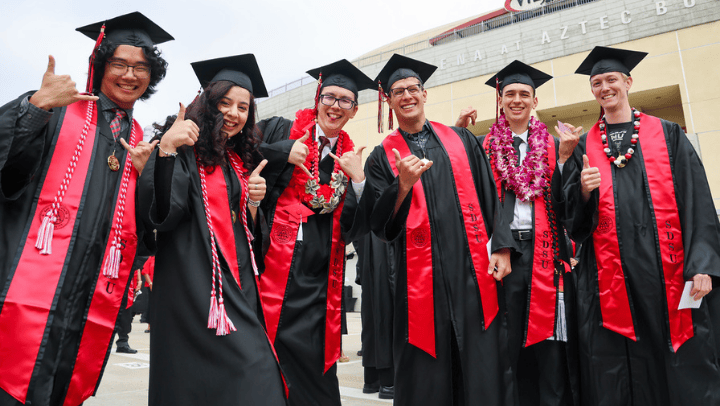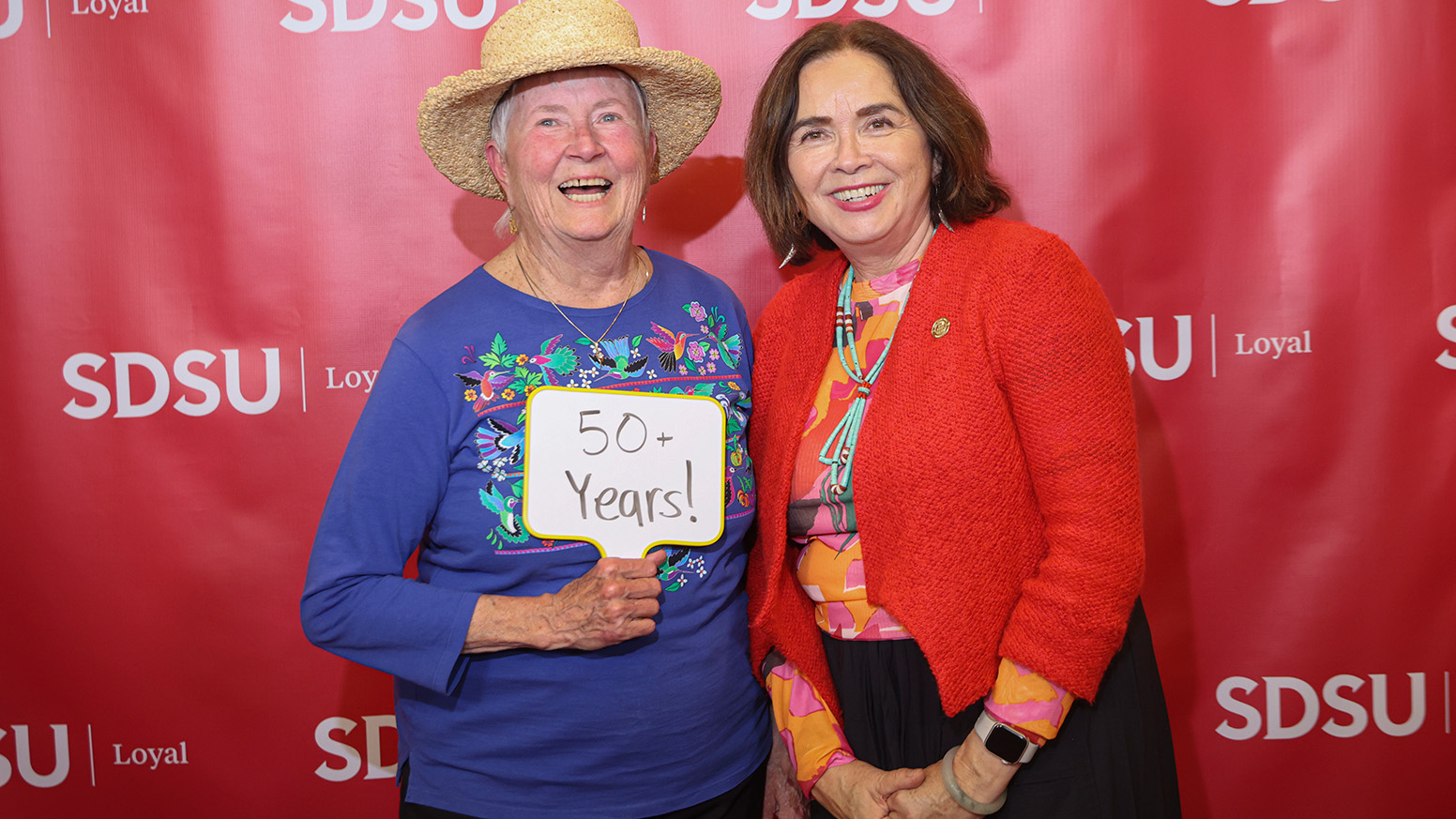SDSU recognized for academic excellence and student success in 2025 Carnegie Classifications
SDSU lands in top 3% nationally for academic profile and earns recognition for supporting local student success

San Diego State University has been named among the top 3% of degree-granting institutions nationwide by the distinguished Carnegie Classifications, earning placement in the "Mixed Undergraduate/Graduate-Doctorate: Large" category.
This recognition is part of Carnegie’s updated 2025 Institutional Classification, which groups universities with similar campuses based on degree offerings, subject areas, and enrollment size, using data from 2020 to 2023. SDSU was placed in the “Large” category, which includes institutions with at least 20,000 students.
“This recognition by the Carnegie Foundation underscores our campus’s dedication to expanding research, enhancing student opportunities, and making a significant national impact, celebrating the achievements of everyone in our SDSU community,” said Sonja Pruitt-Lord, interim vice provost.
SDSU was also named one of Carnegie’s 2025 Opportunity Colleges and Universities – Higher Access, Higher Earnings. Just 16% of institutions earned this distinction, which highlights schools that enroll students from their communities and achieve strong post-graduation earnings outcomes.
It’s the latest in a series of recognitions from Carnegie. In February, SDSU was also elevated to R1 status — a designation reserved for universities with the highest levels of research activity and doctoral degree conferrals. Only 187 universities nationwide hold this title, and SDSU is the only California State University among them.
Carnegie’s new Institutional Classification system includes 31 distinct groupings designed to better reflect the complex landscape of higher education in the country. Carnegie and the American Council on Education (ACE) say the updates will offer greater clarity and easier comparison between institutions for policymakers, funders, and researchers. The old classification relied on the highest degree awarded, even if few of the highest degree types were awarded. The new system uses multiple factors — degree types, fields of study, and size — to group institutions with similar profiles.
The Opportunity Colleges and Universities designation is part of a newly developed Student Access and Earnings Classification published this month by the foundation and ACE. This new classification provides a clearer way to compare institutions and can help guide research on how campuses support positive student outcomes.
In announcing the new classification, the Carnegie Foundation said: “The Student Access and Earnings Classification aims to spur collaboration and institutional improvement with a focus on how higher education can foster opportunities for student success.”
Only four schools in the country are in all of the same categories as SDSU (Mixed Undergraduate/Doctorate-Large, Opportunity Colleges and Universities-Higher Access, Higher Earnings, Research 1: Very High Research Spending and Doctorate Production, Hispanic-Serving Institution, and Asian American and Native American Pacific Islander Serving Institution). Of these four, SDSU is the only institution that has also received the elective classification for community engagement.
Explore SDSU’s Carnegie Classifications further.


